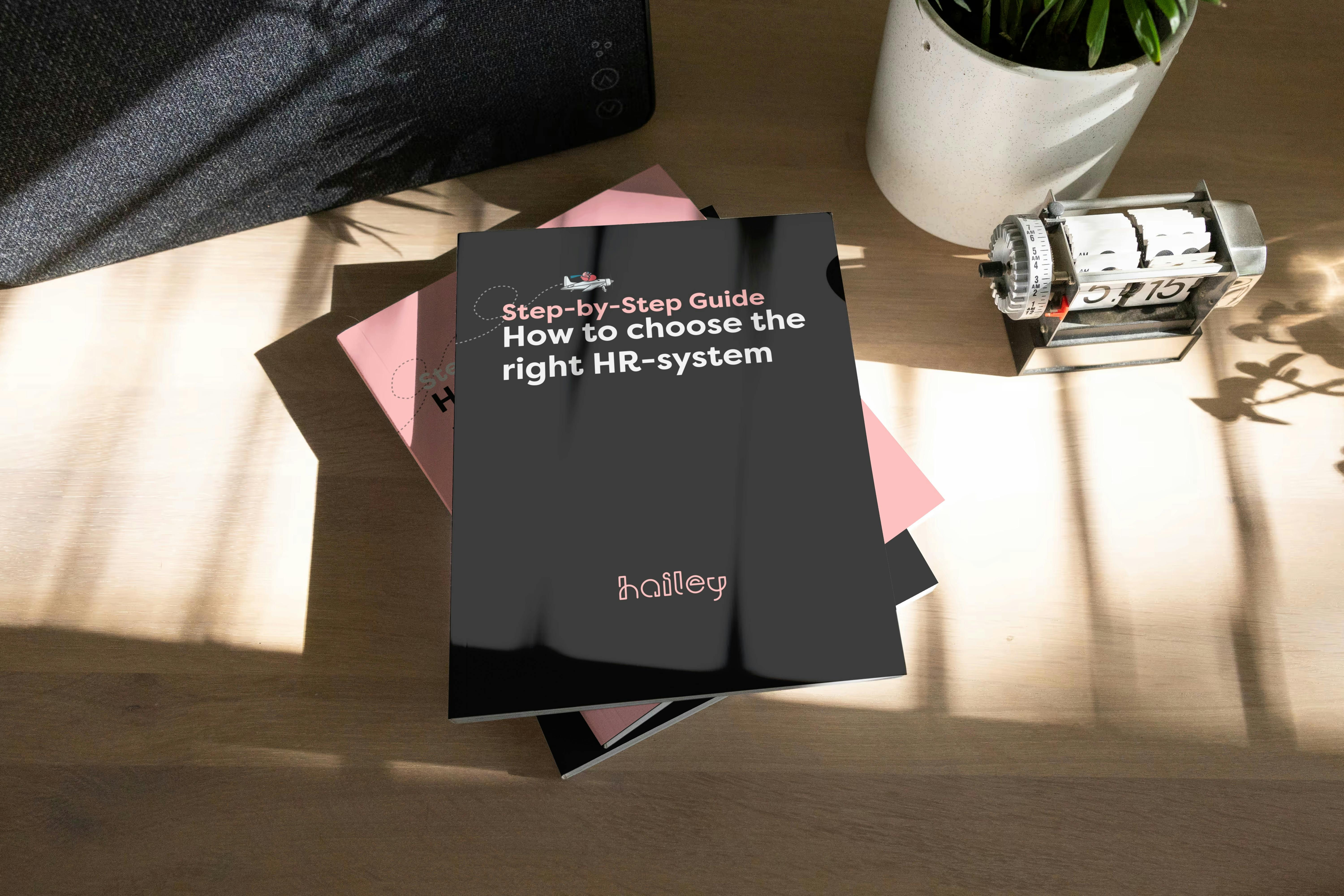
Panel Discussion: How Setly and AMF Fastigheter Work with Pulse Surveys in Hailey
Panel discussion: How Setly and AMF Fastigheter work with pulse surveys in Hailey
When Klara Eidhagen from Setly and Frida Rönquist from AMF Fastigheter started with pulse surveys in Hailey, it wasn't about collecting numbers, but about being able to identify patterns and act where it's really needed. At our pulse event in May 2025, we brought them together with HR strategist Patrik Reman for an open panel discussion about how pulse surveys have changed their work. The results? More insights, faster improvements, and a stronger connection between measurement and actual change.
About Setly and AMF Fastigheter
About Setly and Klara:
Setly is an international service company that combines expertise in accounting, payroll, and HR with its own tech platform. The company helps customers manage accounting, financial management, and payroll administration across borders with one point of contact and local presence.
Klara Eidhagen is Head of People & Culture at Setly. She drives issues related to culture, leadership, and engagement with particular focus on giving managers the right support in their leadership. Pulse surveys are part of that work.
About AMF Fastigheter and Frida:
AMF Fastigheter is one of Sweden's largest real estate companies, focused on creating vibrant urban environments in Stockholm.
Frida Rönquist is HR Partner at AMF Fastigheter. She works to ensure HR is close to the business and drives development in both working methods and culture. For Frida, pulse surveys are a tool for creating real improvement, not just collecting numbers.
From annual snapshots to continuous dialogue
Both Setly and AMF Fastigheter have clearly transitioned from traditional annual employee surveys to more continuous measurement. For Frida at AMF, it's about doing more with the results they receive:
"We really want to do something with the answers we get, not just collect them once a year."
She describes how they now plan to combine their large employee survey every other year with targeted pulse measurements in Hailey based on identified focus areas. This provides clearer follow-up and more resources for actual measures.
At Setly, the need for frequent measurements is even more evident.
"We work in such an industry where we have a very clear high and low season. So measuring once a year is worthless for us really. We need to know how things are here and now and how our employees are doing," states Klara.
We work in such an industry where we have a very clear high and low season. So measuring once a year is worthless for us really. We need to know how things are here and now and how our employees are doing
Challenges with response rates and transparency
Both companies emphasize the importance of communicating the purpose of the surveys. Klara shares that response rates vary between countries and that engagement has been lower in some parts of the organization:
“We’ve communicated the purpose of the pulse surveys a lot, but we still haven’t reached Romania, which I see as our responsibility. Now we’re working more actively to explain why we do the surveys and what value they bring to employees. We also share the results openly—even when they’re not flattering—to build trust and create dialogue.”
Frida agrees:
“It has to be clear that we’re actually doing something with the results. Otherwise, it’s not motivating for colleagues to respond.”
When using Hailey for pulse surveys, results are updated continuously and shown as a rolling trend line along with real-time data. You can then track overall employee engagement or zoom into specific areas by filtering by department, team, or manager. And yes—everything is completely anonymous, which is important to emphasize if there’s low engagement in certain areas.
Tailored frequency and the role of managers
Klara plans to send out pulse surveys every four weeks, with the option to increase frequency during busy periods. Frida opts for quarterly surveys to allow time to act between measurements. Both companies, along with Patrik, emphasize the importance of manager involvement:
”It’s important that managers also say this is important—because they want to follow up on the results next month. If only half the team responds, we won’t get fair data. So that’s crucial,” says Patrik."
Analysis and action at the right level
A recurring theme is how the results are handled. Both Frida and Klara present overall results, but responsibility and dialogue are deepened at the team level. When teams are small, they sometimes need to be merged to protect anonymity. Patrik emphasizes that analyses must go as deep as possible to be effective:
“You want to get down to the group level, because that’s where managers can really take action. But if you only have three or four people in a team, that can be hard. Then you can try merging two groups and treat them as one survey unit,” says Patrik."
Pulse as a tool for change and engagement
For both Klara and Frida, pulse surveys are about creating sustainable work practices and strengthening the organization:
“We want to give our leaders better support in working with their teams while also increasing engagement across the organization. Leadership teams often have an idea of how things work—but the data shows something else. Pulse helps us show how it really is,” says Klara.
Frida agrees and emphasizes that the goal is to improve—not just track:
“I want to measure in order to improve, not just get numbers, even though it's of course important to monitor the trend. By sending out pulses, we become more agile and can allocate more resources where they're needed.”
I want to measure in order to improve, not just get numbers, even though it's of course important to monitor the trend. By sending out pulses, we become more agile and can allocate more resources where they're needed.
Hailey as the tool – Focused questions, fast insights
Patrik shares that he helped develop the question set behind Hailey’s pulse survey tool. The questions are focused and concrete to avoid the vagueness he’s experienced with other tools:
"You see the small shifts right away, so we can act before something becomes a problem. Other tools have felt too blunt—I couldn’t use them. That’s why I developed Hailey’s questions to be sharp, relevant, and focused. All unnecessary elements have been stripped away.”
Klara summarizes the value for HR and managers in having all the data in one platform:
“What I think—and hope—people appreciate is having a single platform. That’s what we really like about Hailey: all communication and surveys are centralized in Hailey”
Tips for starting with pulse surveys: anchor, explain, integrate
Klara stresses the importance of clear communication from the start:
”If you haven’t done pulse surveys before, clearly communicate why you’re starting. Explain what it’s meant to lead to and how it creates value. Bring it up in a monthly meeting and follow up with an email to reinforce the message. And most importantly: show that it leads to action once the results are in."
Frida agrees and adds an important perspective:
"Pulse surveys must not become a separate process—they have to be integrated. What comes up in the results should feed into business planning, goal discussions, and daily dialogues. For it to have real impact, it must be part of everyday work."

